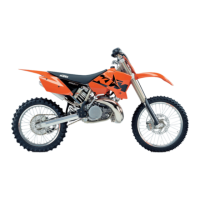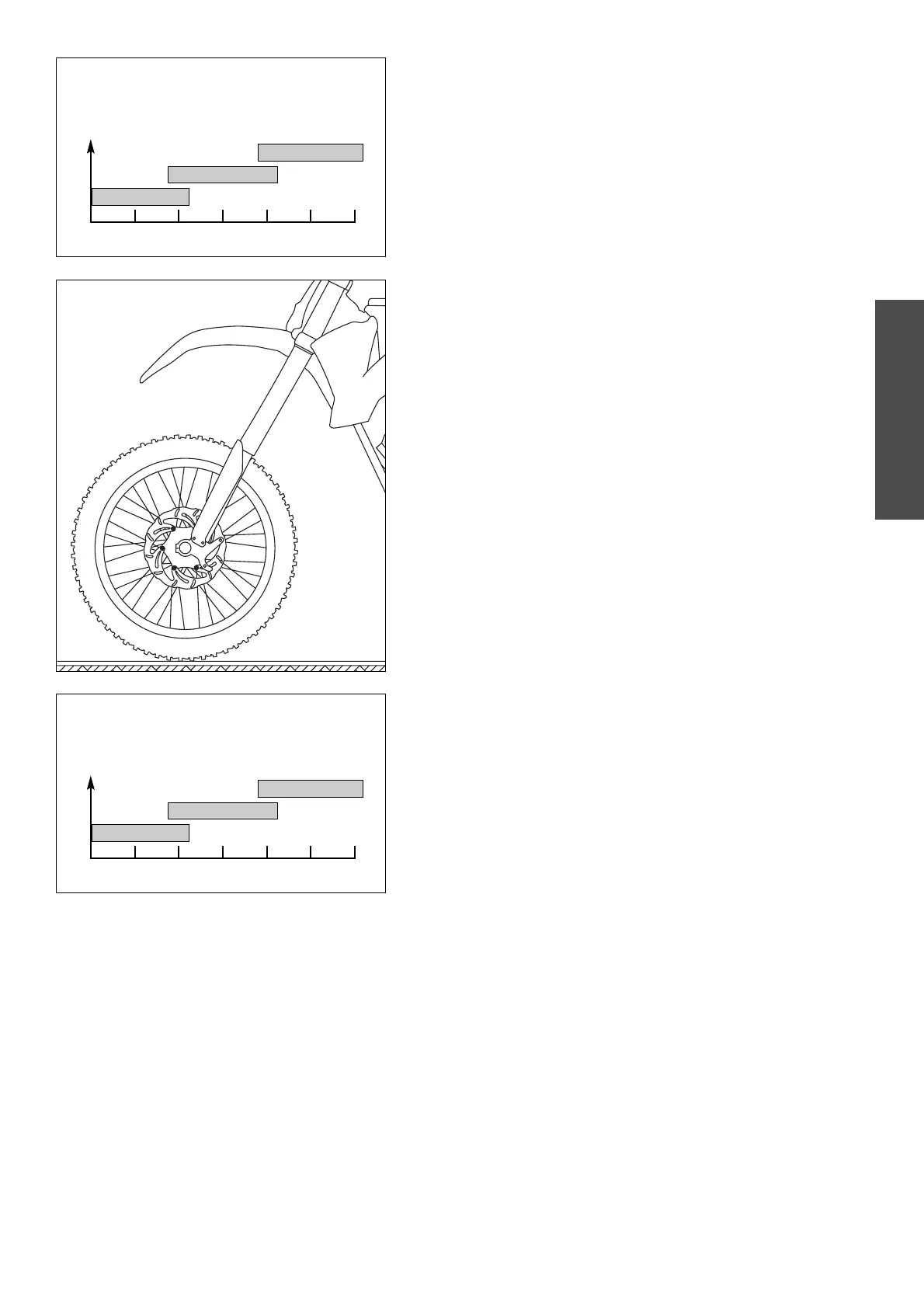ENGLISH
19
According to our experience, the damping rate of the compression stage can
remain unchanged. The damping rate of the rebound stage can be reduced
by a few clicks for a softer spring or increased by a few clicks for a harder
spring.
Checking the basic setup of the telescopic fork
The precise riding sag of the telescopic fork cannot be determined for various
reasons. Similar to the shock absorber, smaller deviations in your weight can
be compensated by adjusting the spring preload. However, if your telescopic
fork bumps frequently (hard end stop during compression), you should install
harder fork springs to avoid damaging the telescopic fork and frame.
Changing the spring preload on the telescopic fork
The telescopic forks of these models are equipped with a preload adjuster
which easily allows the spring preload to be modified. You can change the
spring preload by 10 mm by turning the adjusting screws.
NOTE:
Always turn the adjusting screws the same distance on both fork legs.
Different spring preloads on the fork legs will reduce the telescopic fork's res-
ponse.
Replacing fork springs
If you weigh less than 70 kg or more than 80 kg, you should install the res-
pective fork springs. The correct spring rate is shown in the illustrations. The
standard spring is shown in bold print. The type number of the telescopic
fork is embossed on the caps on the top of the telescopic fork.
If you are uncertain which spring to use, contact your KTM workshop.
According to our experience, the damping rate of the compression stage can
remain unchanged. The damping rate of the rebound stage can be reduced
by a few clicks for a softer spring or increased by a few clicks for a harder
spring.
60
SPRING RATE
65 70 75 80 85 90
RIDERS WEIGHT INCLUSIVE GEARS IN KILOGRAM
76-95/260
81-99/260
71-90/260
PDS 1218X758 250 SX
60
SPRING RATE
65 70 75 80 85 90
RIDERS WEIGHT INCLUSIVE GEARS IN KILOGRAM
4,2 N/mm
4,4 N/mm
4,0 N/mm
1418X726 250 SX

